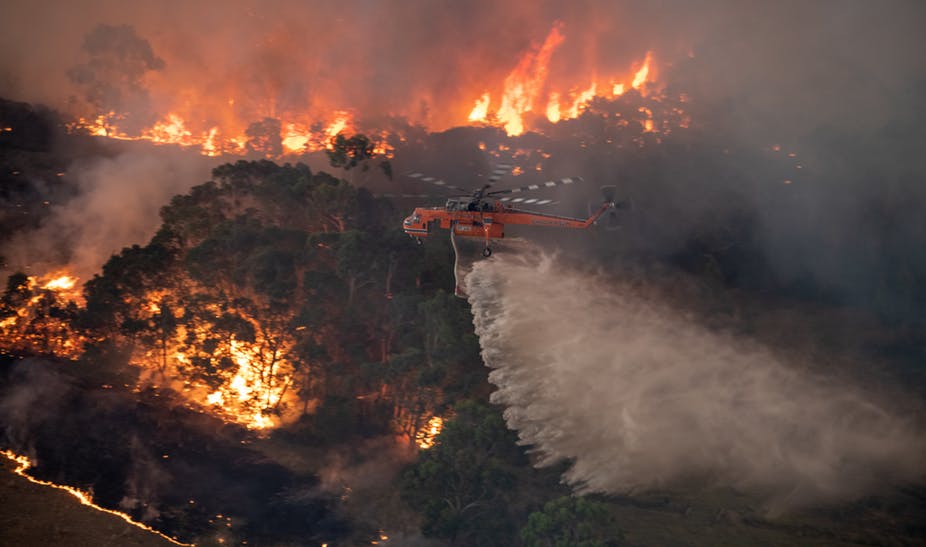The Australian Bushfires
January 7, 2020 | Expert Insights
Australia is being devastated; probably by the worst wildfires in history. The fires which began in September 2019, have and so far, killed 24 people, razed more than 1500 houses and scorched 5.9 million hectares (59,000 square kilometres) of land. While New South Wales (NSW), Queensland and Victoria in Eastern Australia have been worst hit, every state and territory in the country has been affected. Millions of animals are estimated to have perished and the economic cost of the ravages is predicted to be enormous.
Multitudes of bushfires have caused extensive damage across swathes of the continent. Seaside towns have been plunged into darkness, ash is raining down on rural communities and major cities are cloaked in smoke. Neighbouring New Zealand has also been blanketed by these fires with skies turning shades of bright orange, like scenes from an apocalyptic movie. In NSW alone, more than 150 fires continue to burn, many out of control and the blazes are touching the suburbs of Sydney.
The year 2019, was the hottest and driest recorded in Australia. The average temperature was 1.5 degree Celsius above the 1960 to 1990 range and the Maximum Temperature was also a record 49.9 degrees! Scientists, both who study fires and those who study climate change, say there is little doubt that man-made global warming has been the biggest factor, though perhaps not the only contributing factor to these unprecedented fires. Chris Field, Director of Environmental Studies, Stanford University is even more explicit in his assessment, “Australia’s unprecedented wildfires are one of the worst - if not the worst, climate-change extreme events witnessed. They are an iconic representation of climate-change impacts.”
According to the International Energy Agency (IEA), Australia was the 4th largest coal-producer, in 2017. It also has the highest per-capita greenhouse gas emission rates, in the world. The 2020 climate-change performance index, rated Australia last amongst the 57 countries evaluated. There is a flood of public anger, targeting PM Scot Morrison and the Australian Liberal Party. Many Australians feel the government is not doing enough for global climate change, an assertion confirmed by the UN.
Under the 2016 Paris Climate Change Agreement, Australia had set a target for 2030, to make 26-28% reduction in green-house emission, over 2005 levels. However, recent UN estimates found no improvement in Australia’s emission levels, since 2017. On the other hand, as per current projections for 2030, Australia’s green-house emissions appear to be heading, well above the target! Australian apathy towards climate change should also be seen in the light that more than half the G-20 countries (with the biggest economies), are also falling short. Efforts to mitigate Global warming efforts were seriously undermined after the US announced it is pulling out of the Paris Climate Change Agreement. Though the formal process is only likely to be completed by late 2020; and, after the US Presidential election.
Assessment
Governments across the world can be accused of not doing enough to mitigate global warming. Till 2016, climate-change deliberations were characterized by acrimonious and fruitless exchanges between the developed and developing worlds. The 2016 Paris Climate Change Agreement was a spectacular breakthrough; which enabled member states to set their own targets for reducing greenhouse emissions while committing to controlling global warming to less than two degrees centigrade. However, President Donald Trump’s public criticism and the subsequent intimation of US pulling out of the Paris Climate Change Agreement, has undermined these difficult and challenging efforts, almost irreparably. It is perhaps time, for the responsible people of the world, to raise their concern and force the hands of our leaders, to take tangible action.
The question we need to ask is how much worse are we willing to let this get? This is what global warming of one degree Celsius looks like. Do we really what to see the impact of three degrees or more? Because that is the trajectory we are on!
Nerilie Abram
Australian National University
Image Courtesy: theconversation.com


